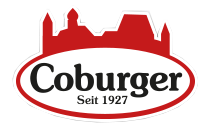What is cheese?
Cheese – these are fresh (or in various ripening stages) products, deriving from coagulated milk. (§1 Cheese Regulation)
How does one differentiate the various types of cheese, such as “semi-hard cheese” and “hard cheese”?
| The cheese classification is effected according to the so-called “moisture on fat-free cheese”(Mff), i.e. the water content in the fat-free cheese matter, which contains all cheese components except fat. | |
| Hard cheese | max. 56 % moisture on fat-free cheese |
| Cheese for slicing | 54 – 63 % moisture on fat-free cheese |
| Semi-hard cheese | 61 – 69 % moisture on fat-free cheese |
| Acid curd cheese | 60 – 73 % moisture on fat-free cheese |
| Soft cheese | min. 67 % moisture on fat-free cheese |
| Fresh cheese | min. 73 % moisture on fat-free cheese |
What is the meaning of cream level, double cream level, low fat level, etc.?
Cheese classification into fat content levels according to the fat content in dry matter (fat i.d.m.)
| Double cream level | 60-87 % fat i.d.m. |
| Cream level | > 50 % fat i.d.m. |
| Full fat level | > 45 % fat i.d.m. |
| Fat level | > 40 % fat i.d.m. |
| Three-Fourths fat level | > 30 % fat i.d.m. |
| Semi fat level | > 20 % fat i.d.m. |
| Quarter-fat level | > 10 % fat i.d.m. |
| Low fat level | < 10 % fat i.d.m. |
What is the difference between „fat i.d.m.“ and „absolute fat“?
„i.d.m.“ is the abbreviation for „in dry matter“
The dry matter is the substance which remains when water is withdrawn from the cheese. The fat content in dry matter is independent from water content or ripening period, while the „absolute fat content“ will vary during the ripening stages due to evaporation.
You may roughly calculate the “absolute fat content” in cheese with this formula:
Hard cheese fat i.d.m. x 0,7
Cheese for slicing fat i.d.m. x 0,6
Soft cheese fat i.d.m. x 0,5
Fresh cheese fat i.d.m. x 0,3
„Coburger Bio-Butterkäse 50%“ (cheese for slicing) for example contains 50 x 0,6 = approximately 30% fat.
What kind of rennet is used?
We use solely microbial rennet for our entire cheese production
Which mould is edible? Which is inedible respectively harmful?
On hard cheese, like for instance Emmental or Gouda cheese, develops some mould on the surface, you may simply cut it off and consume the remaining cheese, because the mould is not able to penetrate the cheese due to its firm texture.
All other cheese types must unfortunately be cast away if you find white-blueish-greenish mould on them, because it is impossible to tell how far the mould has already penetrated the cheese.
Can I eat the rind of smoked cheese?
Yes. The rind develops during the cool curing with beech wood which imparts a unique smoky taste to the cheese.
How do I correctly store my cheese?
Cheese should be stored in a cool and dark place, because it continues the ripening process which is accelerated in a warm environment. Most suitable is therefore storage in the fridge on the middle or upper rack. Semi-hard cheese or cheese for slicing should be wrapped in cling film, which you prick small holes so that the cheese can breathe. Hard cheese may also be wrapped in aluminium foil. There is also cheese paper available, consisting of a foil layer and a paper layer. Soft cheese is at best stored in a silicon box.
With this preparation, soft cheese can be preserved in the fridge for several days, cheese for slicing and hard clearly more than a week.
What does "packaged under protective atmosphere" mean?
The oxygen is displaced with a protective gas mixture (CO2, N2) during the packing of the cheese. Cheese / foodstuffs that are stored or packaged under a protective atmosphere are protected against microbial spoilage and other undesirable changes for a longer period of time and the shelf life is prolonged. Carbon dioxide (CO2) and nitrogen (N2) are natural components of the air. They are odorless and tasteless. A cheese packed under a protective atmosphere is harmless to health.

